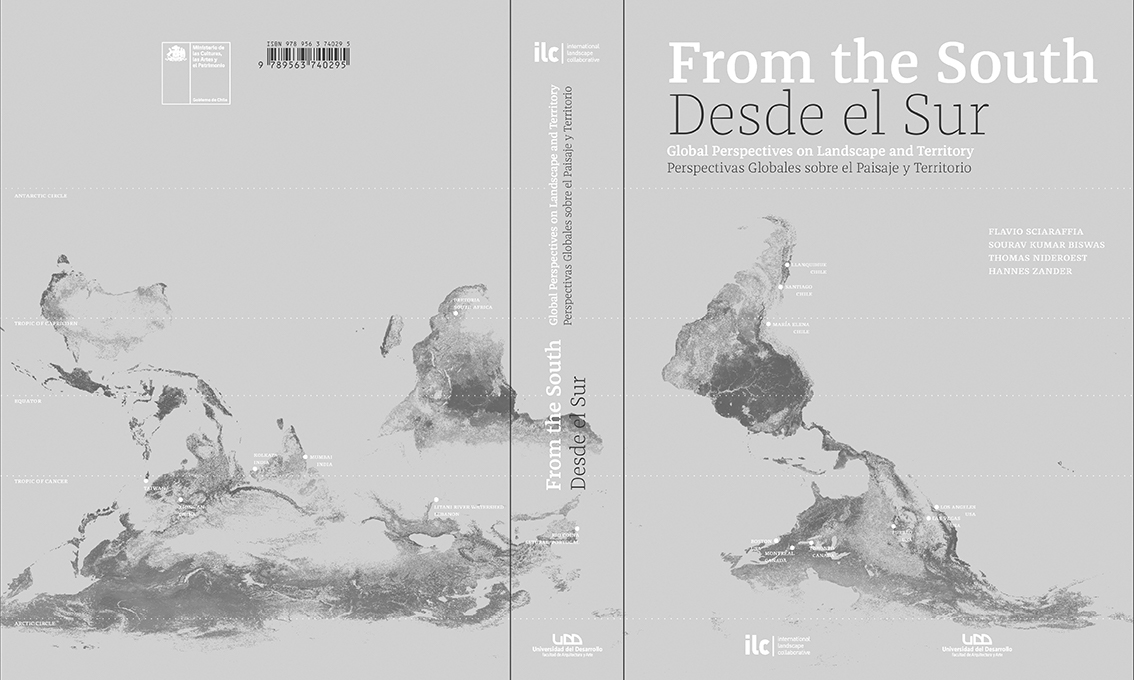Sasaki Designers Publish Book on Landscape and Environmental Issues
A group of Sasaki landscape architects and urban planners co-edited and contributed essays to a new book “From the South: Global Perspectives on Landscape and Territory”
 Sasaki
Sasaki

Thomas Nideroest recently spoke with Hochschule Für Technik Rapperswil Magazin (HSR), a technical university of applied sciences and Nideroest’s alma mater, to discuss his journey into landscape architecture and his involvement in a new collaborative book tackling current issues and ideas about landscape planning, management, and design.
Read a translation of the interview, which originally appeared in German in HSR Magazin, here.

April 4th, 2019—A recently published book, “From the South: Global Perspectives on Landscape and Territory,” contains 18 essays by authors from eight different nations and five continents. It provides new perspectives on contemporary models of landscape planning, landscape management and design, and offers new perspectives on contemporary models of landscape planning. HSR alumni Thomas Nideroest is part of the editorial team. In the following interview, he talks about the book and his job in the context of ecological and geographical challenges.
I started helping out in my parents’ landscaping business early on and developed a passion for craftsmanship and working with nature. Since my apprenticeship as a landscaper, I have always explored new challenges and discovered new aspects of the profession in a national and international context. I have developed from a landscaper working on single family homes to a landscape architect focusing on large-scale planning and design issues internationally. In this setting, I always aspire to develop visionary urban planning and design concepts that also address the consequences of climate change. Therefore, the variety of topics, the richness of professional opportunities, and the freedom of personal development and specialization is what fascinates me most about the profession.
Where I personally experience the biggest differences are in the type of projects and their diverse challenges, in the scope of work in terms of scale, and in the geological conditions and their associated ecological systems. In the United States and in other parts of the world, we face increasing challenges to address the growing consequences of climate change. As planners and designers of cities and urban landscapes, our profession plays an important role. We are tasked to find holistic solutions that anticipate future disasters and adapt to these new environmental conditions. Such projects are often large-scale and highly complex, which calls for new models of interdisciplinary collaboration. I did not experience this degree of complexity and interdisciplinarity working in Switzerland. Furthermore, there are also major differences due to the professionalization of the discipline. Issues of liability on built projects have a strong impact on how construction documents and construction administration are managed and documented in the United States.
I would say it’s a mix of both. At Sasaki, I work on projects in the United States, Vietnam, Japan, China and Afghanistan. This is exciting work because one must interpret correctly what open space means for each of these countries and how the respective cultures use these spaces. That research–especially for complex, large-scale projects and urban development expansions–often emerges as an integral part of planning and design projects. Independent research projects I do in my spare time often take on topics or subject areas that fascinate me, such as the topic of water. In practice, such topics often cannot unfold within the lifespan and budget of a specific project.
The study investigates how water-scarce regions around the world react to water scarcity and shows possible approaches for how to achieve a more sustainable use of water resources through planning and design measures. The study analyzes five countries, Brazil, the United States, Singapore, China and South Africa, which are currently dependent on large-scale water transfer projects. These megaprojects have a significant impact on the natural hydrology, which irreversibly changed the territorial landscape ecology. Each of these infrastructures is designed to carry a certain volume of water to sustain a growing economy and urban population. However, depending on the growth rate, if the local water demand exceeds the availability of imported water, the whole process will have to repeat itself in order to enable further growth. This raises the question of how often this water-urbanization process can be repeated before all available resources are exhausted, the financial expenditures increase exponentially, and new environmental conditions arise, stagnating the local economy.
The idea for the book came about with the establishment of the International Landscape Collaborative (ILC), an interdisciplinary think-tank initiated by four landscape architects of the Harvard Graduate School of Design (GSD). During my studies my colleagues Flavio Sciaraffia, Sourav Kumar Biswas, and Hannes Zander (a fellow HSR alumni) and I were drawn to landscape-based approaches. The book therefore developed out of this interest to further explore the landscape approach through projects in planning and design.
Being part of the editorial team provided me with an opportunity to address an important topic and to promote landscape as an interdisciplinary topic. It is no coincidence that our first book was published in Santiago, Chile. Latin America is increasingly vulnerable to environmental risks such as tsunamis, water scarcity and pollution. Santiago is particularly exposed to harsh landscape conditions due to its geographical location between the Andes Mountains and the coast. To address this vulnerability, the global north usually informs the south, or the south orients itself with the north. Our first book, From the South: Global Perspectives on Landscape and Territory, turns this upside down. The edited volume is a response to the environmental challenges and consequences of the Anthropocene and intends to promote landscape as an approach to urban development. Although landscape architecture as a discipline is not yet widespread in Latin America, landscape as a medium is increasingly becoming more important for social and cultural development and for mitigating natural hazards. Therefore, instead of viewing landscape through the lens of a single discipline, the book uses an interdisciplinary approach. Here, landscape is understood as the common ground from which several stakeholders and disciplines (re-)negotiate the relationships between natural and designed systems to ensure environmental, social, and economic sustainability.
I remember that we would sit by the waterfront of the Obersee, order a St. Galler Schüblig (sausage) from Erwin, and enjoy our lunch with the fantastic panorama of the Alps. Otherwise, the memories of my time at the HSR live on through the ongoing exchange of ideas with my peers. We maintain regular contact, and this year we will celebrate our 9-year HSR anniversary, for which I will be traveling to Switzerland.
Thomas Nideroest completed his bachelor’s in landscape architecture in 2011 at HSR. He received his master’s in landscape architecture from the Harvard Graduate School of Design, USA, where he was awarded the prestigious “Charles Eliot Traveling Fellowship” in 2016. Today he works at Sasaki, a globally active interdisciplinary design firm. The original interview in German can be found here.
A group of Sasaki landscape architects and urban planners co-edited and contributed essays to a new book “From the South: Global Perspectives on Landscape and Territory”
Addressing the decline of pollinator species facing a decline that threatens global food production and ecological systems